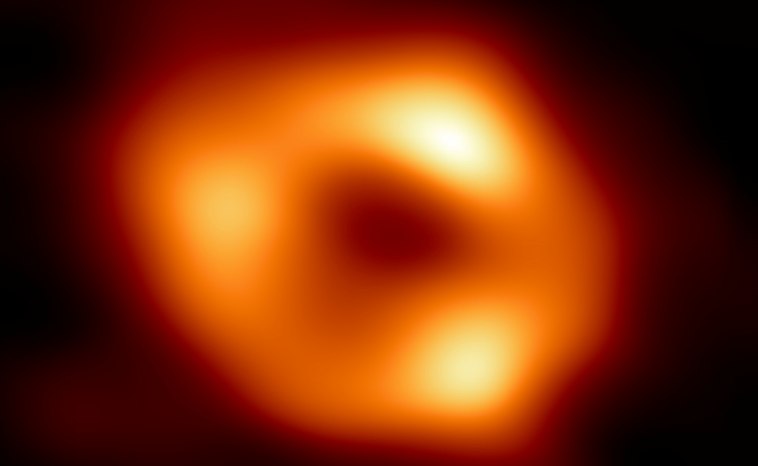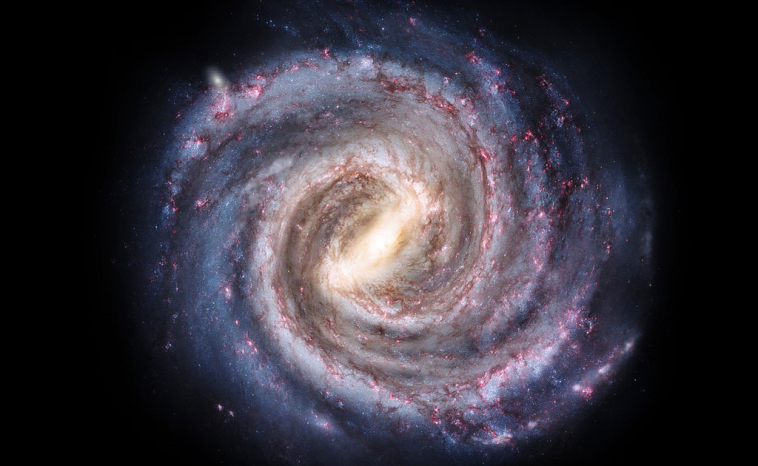What Is the Milky Way?

It has captivated and inspired us for millennia, but what is the Milky Way? In this article, we’ll tell you everything you need to know about our home galaxy.
The Milky Way is a remarkable celestial entity that has captivated the curiosity and imagination of humans for centuries. However, it’s just one of hundreds of billions of galaxies in the observable universe and houses a vast collection of stars, planets, and other celestial objects. But precisely what is the Milky Way? In this article, we’ll explore the history, structure, and myths surrounding the galaxy and delve into the latest scientific discoveries and developments.
- What Is the Milky Way?
- The Milky Way’s Structure
- What is the Milky Way Galaxy Made of?
- Our Place in the Milky Way
- A Brief History of the Milky Way
- Does the Milky Way Galaxy orbit anything?
- Observing the Milky Way from Earth
- The Best Time to Observe the Milky Way
- Recent Discoveries and Developments
- The Continuing Study of the Milky Way
What Is the Milky Way?
The Milky Way Galaxy, commonly referred to simply as the Milky Way, is a barred spiral galaxy home to our solar system, including our Sun and the Earth. It’s an enormous structure containing an estimated 200-400 billion stars, spread across a diameter of approximately 100,000 light-years. Like other galaxies, the Milky Way is composed of many celestial objects, such as stars, planets, asteroids, and various forms of interstellar matter.
The Milky Way’s Structure
The structure of the Milky Way Galaxy is quite complex. In general terms, we can describe it as a spiral galaxy with a central bar-shaped region that is surrounded by a prominent disk of stars, gas, and dust. Furthermore, the disk is divided into four main spiral arms, each containing an abundance of stars and other celestial bodies. The spiral arms are named the Norma Arm, Scutum-Centaurus Arm, Sagittarius Arm, and the Perseus Arm. In addition to the four main arms, our solar system is within a minor arm that we call the Orion-Cygnus Arm. This arm branches off of the larger Perseus Arm.
The Core and Sagittarius A*
At the heart of the Milky Way lies the core, a dense region packed with stars and gas that whirl around the galaxy’s central supermassive black hole, Sagittarius A*. With a mass greater than four million times that of our Sun and a diameter roughly 30 times as big, the black hole has mysterious origins, as we haven’t observed any stars that are large enough to collapse into a black hole of this size.

This is the first image of Sgr A*, the supermassive black hole at the centre of our galaxy. It’s the first direct visual evidence of the presence of this black hole. It was captured by the Event Horizon Telescope (EHT), an array which linked together eight existing radio observatories across the planet to form a single “Earth-sized” virtual telescope. The telescope is named after the event horizon, the boundary of the black hole beyond which no light can escape. Although we cannot see the event horizon itself, because it cannot emit light, glowing gas orbiting around the black hole reveals a telltale signature: a dark central region (called a shadow) surrounded by a bright ring-like structure. The new view captures light bent by the powerful gravity of the black hole, which is four million times more massive than our Sun. The image of the Sgr A* black hole is an average of the different images the EHT Collaboration has extracted from its 2017 observations. In addition to other facilities, the EHT network of radio observatories that made this image possible includes the Atacama Large Millimeter/submillimeter Array (ALMA) and the Atacama Pathfinder EXperiment (APEX) in the Atacama Desert in Chile, co-owned and co-operated by ESO is a partner on behalf of its member states in Europe.
EHT Collaboration, CC BY 4.0, via Wikimedia CommonsThe Halo and Globular Clusters
Surrounding the Milky Way is the halo, a spherical region with a radius of approximately 100,000 light-years. The halo contains old stars and globular clusters, dense concentrations of ancient stars orbiting the galactic centre in random directions.
What is the Milky Way Galaxy Made of?
The Milky Way Galaxy comprises a diverse mix of celestial objects and materials, each of which plays a crucial role in its overall structure and dynamics. We can broadly group these components into three main categories: stars, gas and dust, and dark matter.
Stars
Stars make up a significant portion of the galaxy’s mass and are its primary source of light and energy. They form from clouds of gas and dust, which collapse under the force of gravity and ignite in the process of nuclear fusion. Over time, stars evolve and change, eventually dying and releasing their materials back into the galaxy.
Gas and Dust
Gas and dust are essential components of the Milky Way Galaxy, accounting for roughly 15% of its total mass. This material primarily composes of hydrogen, helium, and trace amounts of heavier elements. It exists throughout the galaxy, both within the spiral arms and in the interstellar medium that fills the space between stars.
Dark Matter
Physicists believe that a significant portion of the Milky Way’s mass comprises dark matter, a mysterious and elusive substance that does not interact with light. Astronomers can infer the presence of dark matter by measuring the gravitational effects it has on visible objects within the galaxy. Despite this, the true nature of dark matter remains a subject of ongoing scientific investigation.

Pablo Carlos Budassi, CC BY-SA 4.0, via Wikimedia Commons
Pablo Carlos Budassi, CC BY-SA 4.0, via Wikimedia CommonsOur Place in the Milky Way
As inhabitants of the Milky Way Galaxy, it is essential to grasp where we stand within this vast cosmic structure. Our solar system, including the Earth, is about 27,000 light-years away from the galactic centre. In our night sky, the Milky Way appears as a band of stars stretching across the heavens, a visual representation of the flattened disk structure of our galaxy.
A Brief History of the Milky Way
The term’ Milky Way’ has its roots in ancient Greek and Roman mythology, where the celestial band was believed to be a river of milk created by the goddesses Hera and Ops. The Milky Way has been associated with different myths and legends in various cultures, such as the Silvery River of Heaven in Eastern Asia and the Pathway of the Birds in Finnish and Estonian folklore.
Early Observations and Theories
Long ago, humans observed a ghostly band of light stretching across the night sky, which we now know as the Milky Way. However, it was the invention of the telescope that revealed the Milky Way’s true nature. Astronomers like Galileo Galilei observed that the band of light was composed of countless stars seeming to merge due to their distance from Earth and proximity to one another.
Edwin Hubble’s Discoveries
In the 1920s. astronomer Edwin Hubble revolutionised our understanding of the Milky Way and its place in the universe. Through his observations of Cepheid variable stars in the Andromeda galaxy, Hubble discovered that the Milky Way was not the only galaxy in the universe, confirming the existence of other galaxies and relegating our home galaxy to a less significant position in the cosmos.
Does the Milky Way Galaxy orbit anything?
While the Milky Way Galaxy does not orbit any single celestial object in the way that planets orbit stars, it is part of the Local Group, a larger cosmic structure. This group contains the Milky Way, the Andromeda galaxy, and approximately 80 smaller galaxies.
Furthermore, the Local Group is a member of the Virgo Supercluster, a vast collection of galaxies that spans an even larger region of space. On an even larger scale, the Virgo Supercluster is part of a massive structure that we call the Laniakea Supercluster, encompassing over 100,000 galaxies.
So, while the Milky Way Galaxy does not orbit a single object, it is part of a complex and interconnected web of cosmic structures that move and evolve together under the influence of gravity.
Observing the Milky Way from Earth

Under ideal conditions, you can observe the Milky Way as a faint, cloudy band of light stretching across the night sky. In order to fully appreciate its beauty and intricacy, you’ll need to venture away from light pollution and into areas with dark, clear skies.
The Best Time to Observe the Milky Way
The optimal time to observe the Milky Way varies depending on your location and the time of year. The summer months generally offer the best views of the galactic core and its surrounding spiral arms, while the winter provides a clearer view of the galaxy’s outer regions.
Tools and Techniques for Observing the Milky Way
A telescope is an invaluable tool to fully appreciate the Milky Way’s splendour. Consequently, even a small telescope can reveal a wealth of detail within the galaxy, transforming the faint cloud of light into a stunning vista of countless stars.
Recent Discoveries and Developments
The study of the Milky Way is an ever-evolving field in which scientists are constantly making discoveries and advancements. Accordingly, some recent developments in our understanding of the galaxy include:
Gaia’s 3D Map of the Milky Way
The European Space Agency’s Gaia satellite is working to create a three-dimensional map of the Milky Way’s stars with unprecedented accuracy. Subsequently, this data will help astronomers uncover new insights into our galaxy’s structure, evolution, and history.
The Milky Way’s Population of Exoplanets
Recent advancements in exoplanet detection have revealed that the Milky Way is likely home to a vast number of planets, some of which may reside in solar systems similar to our own. Without a doubt, the ongoing search for these celestial bodies is helping to refine our understanding of planetary formation and the potential for life elsewhere in the universe.
The Mystery of the Central Bar
One of the most intriguing aspects of the galaxy’s structure is a central “bar” of stars that runs across its core. While barred spiral galaxies are not uncommon in the universe, the precise mechanisms behind the formation of these central bars remain a subject of ongoing research.
The Continuing Study of the Milky Way
As our understanding of the Milky Way grows, so does our appreciation for our home galaxy’s complex and dynamic nature. From its earliest myths and legends to the latest scientific discoveries, the Milky Way is a testament to humanity’s enduring fascination with the cosmos and our place within it. While we continue to explore the universe around us, our home galaxy remains an enduring source of wonder, inspiration, and scientific inquiry.
So, now that we’ve examined the Milky Way, why not explore some of the notable stars that call the galaxy home? The OSR’s One Million Stars App lets you tour the galaxy and learn more about some of its most famous residents.

